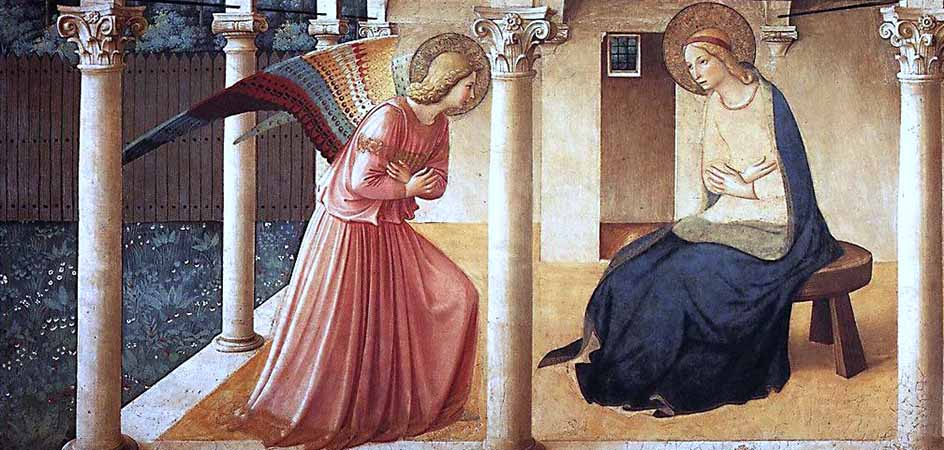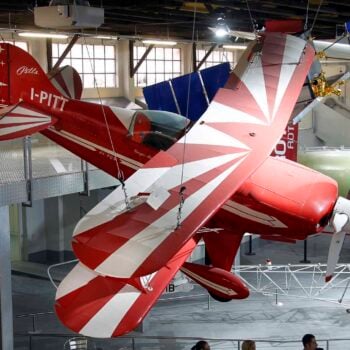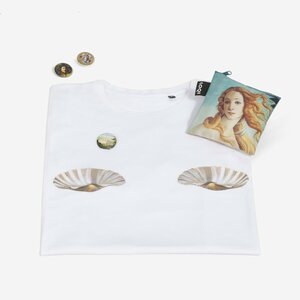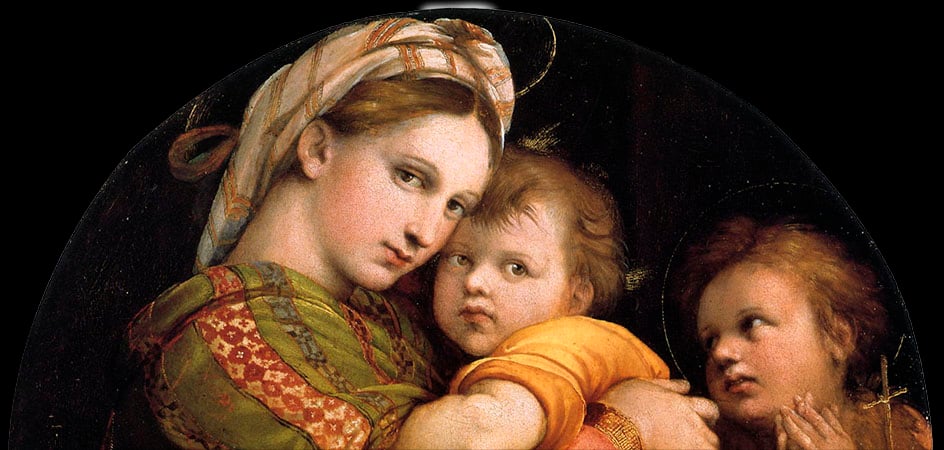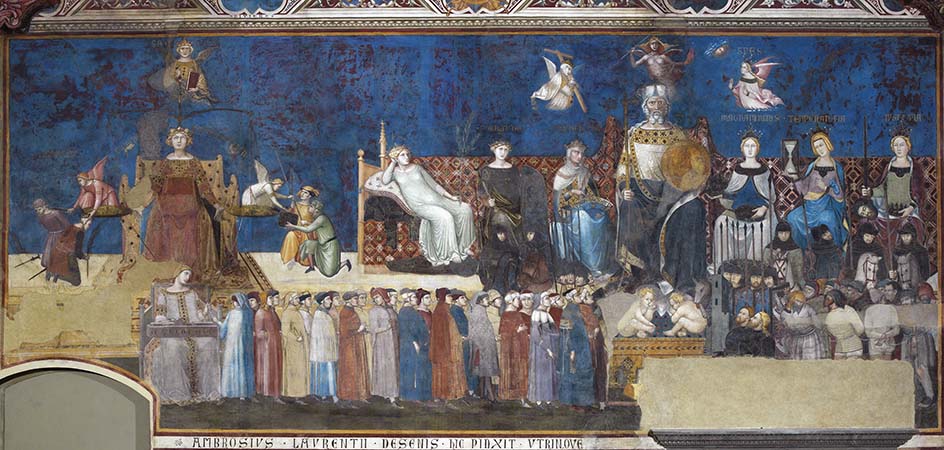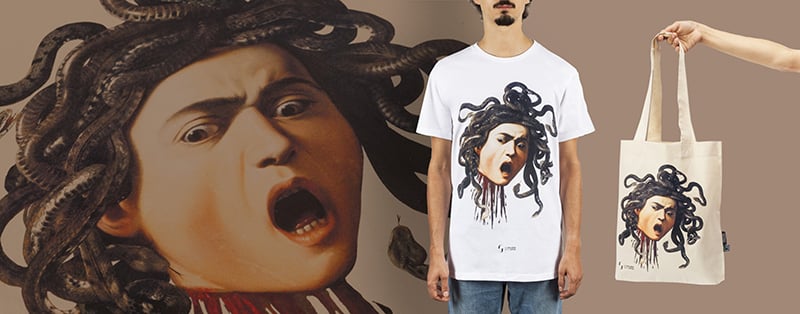There are many aspects that make the Museo di San Marco in Florence a truly unique place. Originally established as a convent, it was partially secularized in the latter half of the 19th century when it was declared a national monument.Inside, it now houses the largest collection of works by Beato Angelico – the friar-artist who lived and worked here for many years, creating an impressive cycle of frescoes. Among these, the Annunciazione – a recurring theme in his art – enchants viewers with its imposing yet refined simplicity, a true masterpiece of the early Renaissance.
The Annunciazione “at the top of the stairs”: iconography and style
Visible from the very last steps leading to the first floor of the former convent, the Annunciazione – dubbed “at the top of the stairs” to distinguish it from other works by the same artist present here – welcomes visitors and envelops them in its essential yet majestic grace. Created around 1440, the work spans over three meters in width and more than two in height.
The fresco depicts the Archangel Gabriele kneeling as he announces the birth of Christ to the Virgin, who receives him seated on a simple stool. Framed by a sober loggia, both figures have their arms crossed over their chests as a sign of their submission to the divine will.
However, the scene is slightly shifted to the right. This curious off-center composition is not accidental but serves to highlight Mary’s purity. The left side is largely occupied by a flowering meadow enclosed by a fence (a symbol of her virginity), overlooking a grove of cypress trees. Even the two types of capitals that top the loggia’s columns allude to the Virgin’s virtues: the Corinthian ones to glory, and the Ionic to humility.
Decorative elements are kept to a minimum: only the colorful wings of the Angel and the golden motifs adorning his robe stand out, while Mary is simply attired. We do know, however, that Beato Angelico used precious azurite for the Virgin’s mantle and gold insets for her halos – details that are unfortunately no longer visible today.
Two Latin inscriptions run along the lower edge of the painting: the first bears the Angel’s greeting, “Hail, O Mother of Piety and noble dwelling of the Holy Trinity”, while the second invites onlookers, “As you enter, when you pass by the untouched figure of the Virgin, be sure not to forget to say the Hail Mary”.
Are you interested in articles like this?
Sign up for the newsletter to receive updates and insights from BeCulture!
Between Gothic and Renaissance: tradition and innovation
The Annunciazione is one of the most significant works in Beato Angelico’s oeuvre, serving as an ideal link between the end of International Gothic and the dawn of the Renaissance.
Indeed, the Angel and the Virgin still bear traces of medieval iconography – in the monumental, static, and isolated nature of their figures, in the drapery, and in the linearity of their garments. Yet at the same time, there are already signs of the new Florentine culture – represented by figures such as Donatello, Masaccio, Michelozzo, and Brunelleschi. The harmonious plasticity of the figures, the regular geometry of the architectural setting rendered in perspective, and the overall three-dimensionality of the scene all testify to the painter’s sensitivity to the innovations of his time.
And then there are the unique qualities of Angelico himself, which bestow the Annunciation with an unprecedented simplicity, placing the sacred episode in an atmosphere of absolute tranquility. Nothing disturbs the scene, captured at its highest and most intense moment.
This intensity is heightened by the stark setting and the absolute, diffused light, contributing to the painting’s extraordinary aesthetic balance. In Angelico’s work, the beauty of the composition becomes a means to express the spiritual truth represented even more clearly and distinctly.
Beato Angelico at San Marco
There are few documentary sources on the life and works of Guido di Pietro, known as Frate Giovanni de’ Frati di San Domenico da Fiesole and, today, as Beato Angelico (beatified in 1994, though his contemporaries already called him “Angelico”). It is therefore difficult to precisely date his work, including that at the San Marco convent, which is believed to have been executed between 1436 and 1445, with some possible later additions.
The question of attribution is equally open: how many of the numerous frescoes decorating the lunette of the cloister, the corridors, and the cells were executed solely by the master, and which ones by his assistants? Scholars’ opinions differ, although there is unanimous agreement on the authorship of the Annunciazione in the east corridor.
The sequence in which the various paintings were executed is also unknown; they may have been retouched by Angelico upon his return from Rome, and we do not know what theological program underpinned the cell frescoes. In fact, the decorations do not follow a sequential development of the sacred themes, nor do they all share the same subject – various hypotheses have been proposed, but none with certainty.
What we do know, however, is that they were intended for the Dominican friars, the artist’s brethren, and that – probably for this reason – they have an even more austere style than the Annunciazione “at the top of the stairs”.
The Annunciazione in cell 3 and the artist’s iconographic evolution
In addition to the one at the top of the stairs, the Museo di San Marco also houses a second frescoed Annunciazione, located in cell 3 of the clerics’ corridor.
Designed for private contemplation, it minimizes the figurative elements: unadorned and ethereal, the portico is rendered with a double row of arches. The angel no longer appears bowed but stands upright, and the slender Mary is depicted kneeling on a humble prayer bench. To the left, Saint Peter Martyr is shown in prayer. The figures are light, almost insubstantial, and the background is sparse and delicate; the handling of light and color – with the pastel tones typical of Angelico at San Marco – imbues the painting with an intimate and gentle quality.
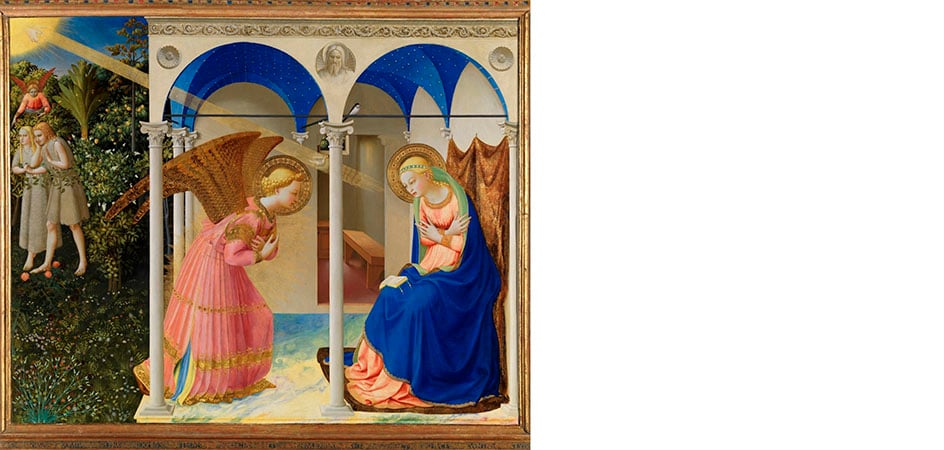
It is likely that this Annunciazione was created shortly after the one in the corridor, but it is certainly later than the panels on the same subject preserved at the Prado Museum in Madrid (1425–1426) and the Museo Diocesano of Cortona (circa 1434–1436). Observing these works, one notices a gradual evolution not only in the painter’s style – partly influenced by his technique – but also in his compositional approach.

The settings filled with sumptuous furnishings and coverings seen in the first two Annunciazioni are replaced in the wall paintings by severe, almost confined spaces. The Cacciata dal Paradiso dei Progenitori also disappears from the background. Thus, the scene is stripped of everything that is not essential to the direct narration of the biblical event, allowing it to shine in all its eternal beauty.Imbued with sincere and unpretentious spirituality, Angelico’s frescoes still exude tranquility and harmony today – a must-see spectacle for anyone visiting Florence.


